Reimagining hospitality: inside the 'Night & Day' suite design

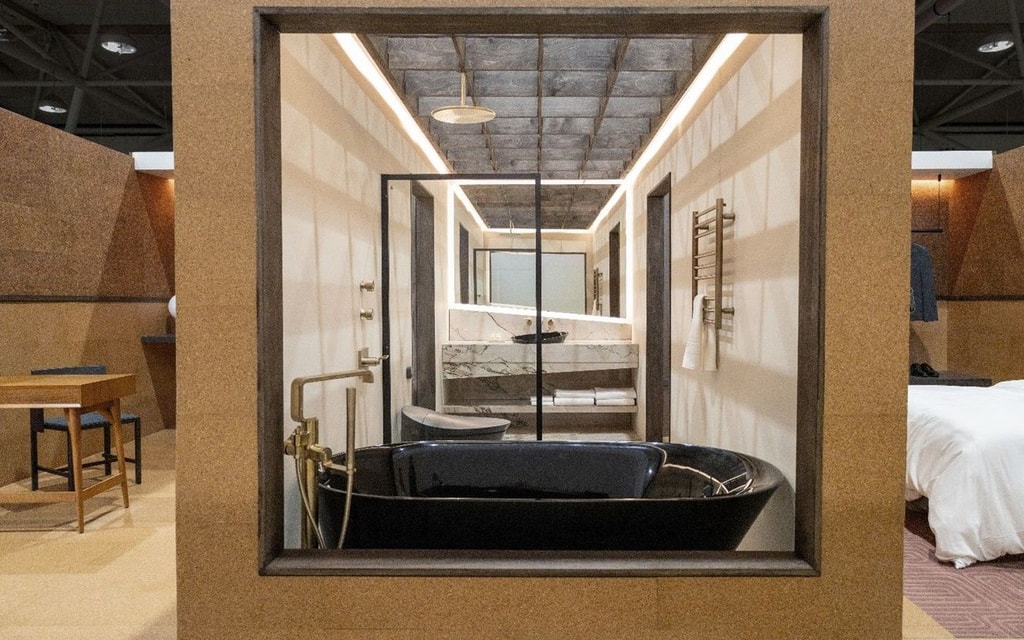
The world of hospitality design is shifting rapidly, driven by evolving guest expectations, technological advancements, and a growing commitment to sustainability. At the heart of this shift is a move toward creating hotel spaces that don’t just accommodate, but welcome and nurture. As expectations around travel and accommodation continue to evolve, so too must the environments we design.
To explore how interior design can respond to the evolving needs of modern travelers, our Interiors team created the ‘Night & Day’ hotel suite—a concept that reimagines the guest experience through the lens of adaptability, comfort, and connection. Originally showcased at the Interior Design Show (IDS) 2025, the suite blends flexible layouts, sustainable materials, and discreet technology to support a variety of guest needs—from restful retreat to productive workspace and vibrant social setting.
In this Q&A, our interiors team shares their thinking behind the “Night & Day” suite design, the trends influencing the next generation of hotels, and how interior designers can lead the way in redefining what it means to feel at home—anywhere in the world.
What is the future of hospitality design?
The future of hospitality design is evolving to create more technologically integrated and multi-functional spaces that extend beyond traditional uses. Hotels are no longer just places to sleep; they are communal hubs for work, social interaction, and relaxation. We are seeing more and more of a desire to activate lobbies and podiums to attract local community as guests, especially in urban settings. A once private space can be carefully adjusted to transition to a public space, all while maintaining security for the guests. This transition is allowing these private to public spaces to be activated both day and night.
What trends in modern travel are influencing hospitality design?
A key trend is the blending of hospitality and residential design. Guests are seeking ‘home away from home’ experiences, which has led to a rise in open hotel lobbies that function as coworking, meeting and collaboration spaces during the day and social lounges at night. Hotels are becoming community-driven environments, catering to both travelers and locals by providing inviting, multi-use spaces.
What was the vision behind the ‘Night & Day’ suite design?
We focused our efforts on a traveller’s private space in the hotel – their suite – and what the future means. When we explored the ‘future of hotels,’ we saw sterile, high-tech spaces that felt cold and uninviting – a suite environment depicting extreme digital overstimulation. While we can’t avoid the course of advancing technology to meet the individual needs of guests, we wanted to imagine completely integrated technology while maintaining our human connection and responsibilities to nature.
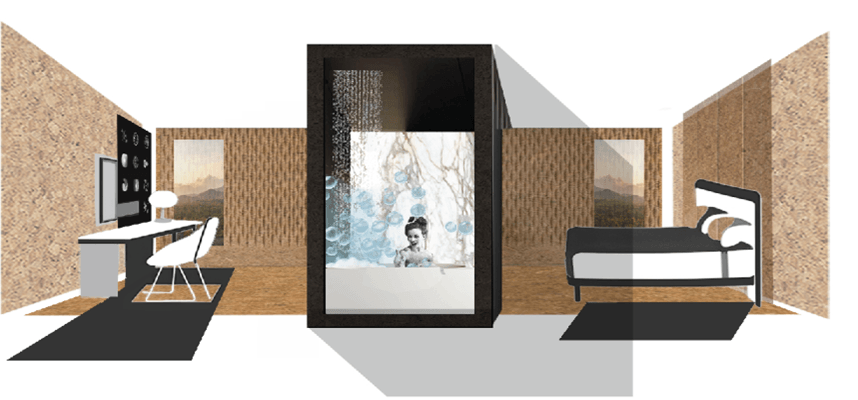
How did you approach flexibility and customization in your design?
Our concept revolved around a reimagined floor plan considering the night and day duality. A centrally positioned washroom connects two adaptable spaces depending on guest needs—whether it’s a traveler with a colleague, a family requiring separate sleeping areas, or an individual needing a work-lounge setup. The idea was to maximize functionality while maintaining a compact and efficient footprint. Additionally, the integration of smart technology, including AI-driven lighting, temperature control, and personalized room settings, enhances user experience by offering, real-time customization. These features allow guests to tailor their environment to their preferences, ensuring comfort and efficiency throughout their stay. While this is not the traditional hotel room floorplan, it has been designed for modular placement, making it ideal for boutique-style hotels that require adaptable, space-efficient solutions.
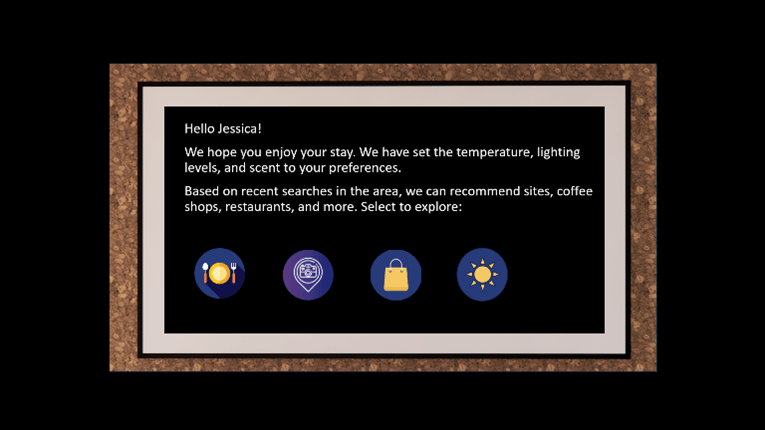
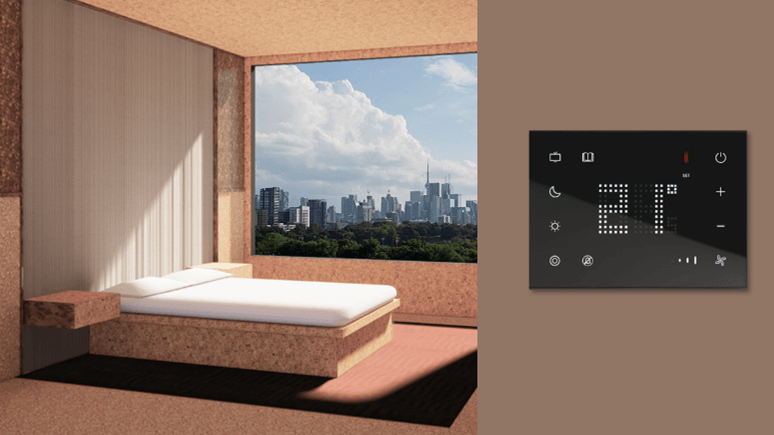
What role does sustainability play in hospitality design?
Sustainability isn’t just a ‘nice-to-have’; it’s a necessity. We prioritized low-carbon, eco-friendly materials throughout the suite. We focused on the application of cork to express this, which offers warmth, sound absorption, and durability. The focus on this is driven from the development of our carbon responsible materials database, moving toward full and completely sustainable building goals. The life cycle of hospitality environments is short and as interior designers, we are tasked and responsible for increasing the longevity of these overworked spaces.
The modular nature of our design offers a holistic approach to the conversation of sustainability. Prefabricated modular units can be constructed off-site in a controlled environment, significantly reducing construction waste and energy consumption. This approach shortens build times, lowers labour costs, and minimizes the environmental impact of on-site construction. The ability to scale modular units efficiently assures that hotels can adapt to changing market demands while maintaining a sustainable approach to development.
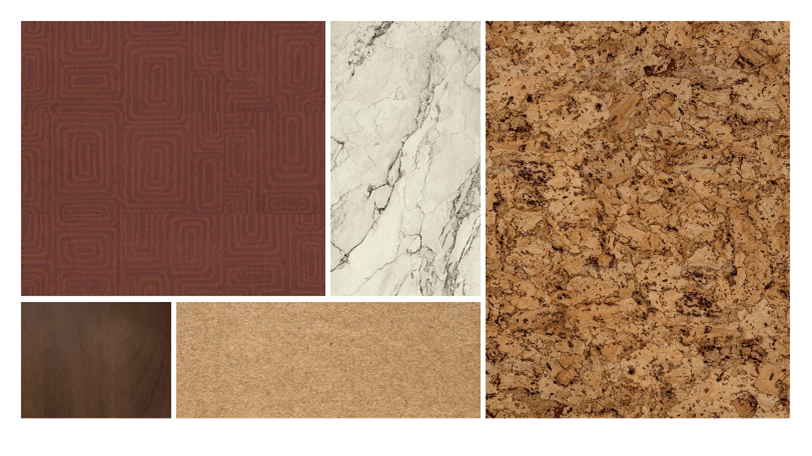
How should interior designers position themselves in the sustainability conversation?
Designers have a responsibility to push for sustainable solutions, even when clients may not prioritize them. It’s essential to select responsibly made materials, advocate for circular design principles, and challenge industry norms around waste and disposability. More stringent mandates for sustainability in interiors—similar to those seen in architecture—need to be established.
What’s next for hospitality design?
There will be a continued push toward smart, adaptable spaces that balance high-tech functionality with a natural, human-centric design. The integration of flexible layouts, customizable lighting and temperature settings, and modest technology will continue to redefine guest experiences. Sustainability and wellness will remain at the forefront, ensuring that hospitality spaces not only meet contemporary needs but are also future proofed for evolving lifestyles.
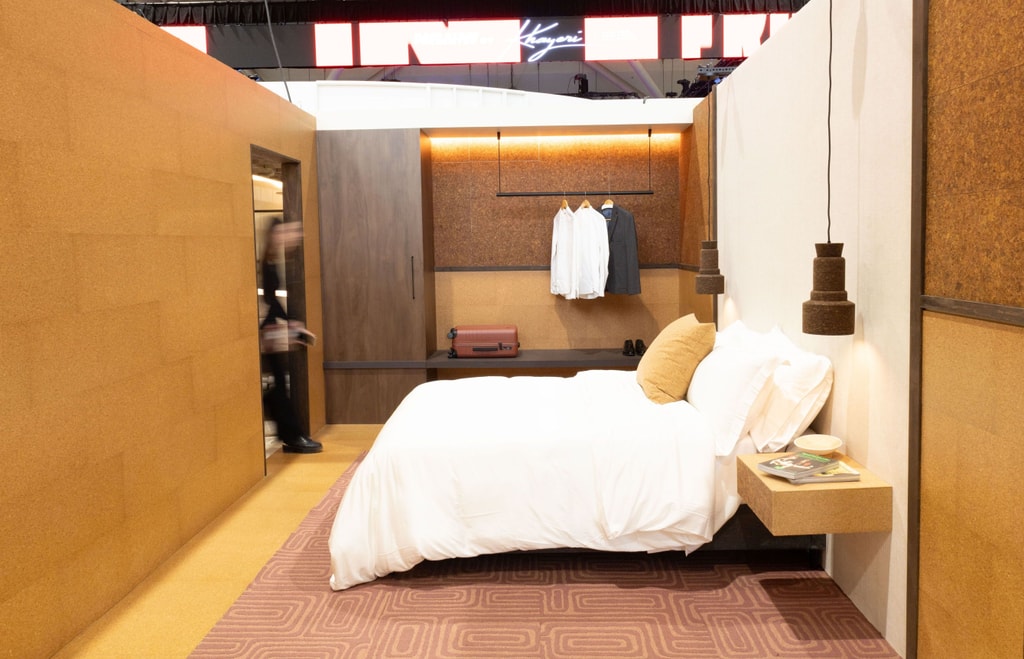
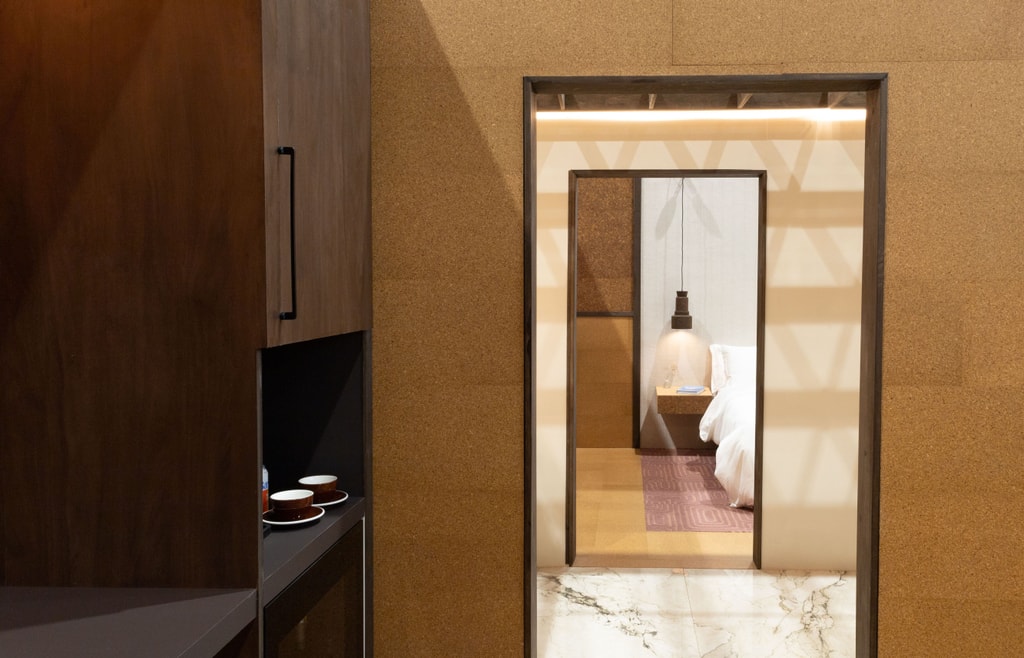
Our ‘Night & Day’ suite design provides an opportunity to explore how hospitality design can evolve to be both experiential and sustainable. Through thoughtful layouts, innovative materials, and a human-centered approach, we gained valuable insights into the future of travel and design—insights that will continue to shape our work moving forward.